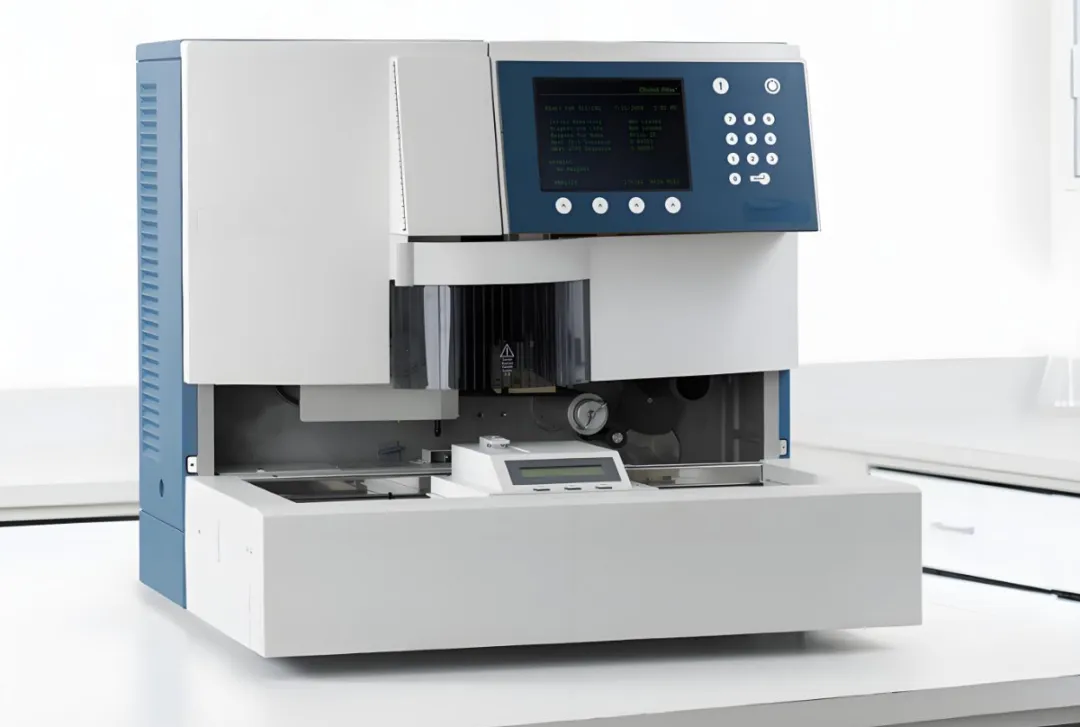With the advancement of emergency medicine, blood gas analysis has become an essential monitoring item for critically ill patients, playing a key role in improving the success rate of emergency rescues.
A fully automated blood gas analyzer is a medical instrument used to measure parameters in arterial blood samples from the human body, such as gases (oxygen, carbon dioxide) and electrolytes (such as hydrogen ion concentration, sodium ion concentration). It can provide vital physiological parameters to help medical staff assess the respiratory function, acid-base balance, and electrolyte status of patients, thereby guiding clinical diagnosis and treatment.

Working Principle:
01 Collect arterial blood samples from patients.
02 Place the sample into the reaction pool, where sensors measure parameters such as pH value, oxygen partial pressure, carbon dioxide partial pressure, and electrolyte concentration in the sample through chemical reactions or physical measurement principles. These parameters are converted into electrical signals and transmitted to the electronic control system, which processes the data according to preset algorithms.
03 Calculate the concentration values of blood gas and electrolyte parameters and finally convert them into readable data. The processed test results (such as pH value, oxygen partial pressure, carbon dioxide partial pressure, electrolyte concentration, etc.) will be displayed on the instrument's screen, output as a printed report, or transmitted to the hospital information system.
(9) (1).jpg)
A fully automated blood gas analyzer must have data processing algorithms to provide high-precision and accurate measurements of blood gas and electrolyte parameters, store test data, generate reports, and output them, support data transmission to the hospital information system, and be equipped with a user interface and operating system for easy viewing of results, data analysis, and recording by medical personnel.
The ARM architecture processor has the advantages of low power consumption, high performance, and rich interfaces. Qiyang, based on the NXP i.MX8M Plus processor, has launched the IAC-IMX8MP-CM core board, which has a wide range of applications in the medical field.
Advantages of the Qiyang IAC-IMX8MP-CM core board in fully automated blood gas analysis:
The Qiyang IAC-IMX8MP-CM core board is based on the NXP i.MX8M Plus high-performance processor, featuring a quad-core Cortex-A53 with a clock speed of up to 1.6GHz, providing strong computing power for processing complex algorithms and data analysis tasks, and a Cortex-M7 core for real-time monitoring of device status, controlling sample collection, and analysis processes.
The core board has an NPU with a computing power of 2.3TOPS, supports mainstream AI frameworks, and executes AI algorithms, which can accelerate the analysis and diagnosis process of blood gas samples, perform real-time blood gas parameter calculations, anomaly detection, and result interpretation, providing fast and accurate analysis results.
In terms of medical instrument display, the core board supports multiple display interfaces such as MIPI-DSI, LVDS, and HDMI, allowing connection to high-definition displays to implement user interfaces; it has a built-in image processing unit ISP that meets the needs for real-time image processing and display, providing timely data feedback and visual results.
The i.MX8M Plus core board supports dual Gigabit Ethernet ports, dual-frequency Wi-Fi, and 5G communication methods, enabling data transmission and sharing with medical devices, hospital information systems, or cloud platforms, achieving automatic backup, retrieval, and sharing of data, facilitating data management and analysis.
In addition, the core board also has a wealth of interface resources that can be used to connect external devices and modules required for the fully automated blood gas analyzer; it supports Android and Linux systems, making it easy for users to flexibly adjust the design according to their own needs and quickly implement products.



